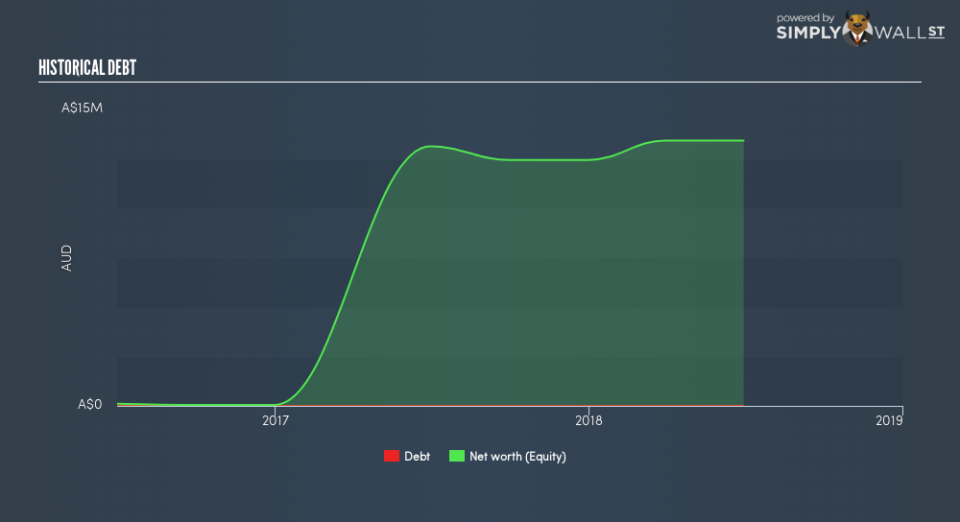Is Roto-Gro International Limited (ASX:RGI) A Financially Sound Company?

Roto-Gro International Limited (ASX:RGI), which has zero-debt on its balance sheet, can maximize capital returns by increasing debt due to its lower cost of capital. However, the trade-off is RGI will have to follow strict debt obligations which will reduce its financial flexibility. While zero-debt makes the due diligence for potential investors less nerve-racking, it poses a new question: how should they assess the financial strength of such companies? I recommend you look at the following hurdles to assess RGI’s financial health.
View our latest analysis for Roto-Gro International
Want to help shape the future of investing tools and platforms? Take the survey and be part of one of the most advanced studies of stock market investors to date.
Does RGI’s growth rate justify its decision for financial flexibility over lower cost of capital?
Debt capital generally has lower cost of capital compared to equity funding. Though, the trade-offs are that lenders require stricter capital management requirements, in addition to having a higher claim on company assets relative to shareholders. RGI’s absence of debt on its balance sheet may be due to lack of access to cheaper capital, or it may simply believe low cost is not worth sacrificing financial flexibility. However, choosing flexibility over capital returns is logical only if it’s a high-growth company. RGI’s revenue growth over the past year was an impressively high triple-digit rate, so it is acceptable that the company is opting for a zero-debt capital structure currently as it may need to raise debt to fuel expansion in the future.
Can RGI meet its short-term obligations with the cash in hand?
Given zero long-term debt on its balance sheet, Roto-Gro International has no solvency issues, which is used to describe the company’s ability to meet its long-term obligations. However, another measure of financial health is its short-term obligations, which is known as liquidity. These include payments to suppliers, employees and other stakeholders. At the current liabilities level of AU$1.8m, the company has maintained a safe level of current assets to meet its obligations, with the current ratio last standing at 2.3x. For Machinery companies, this ratio is within a sensible range as there’s enough of a cash buffer without holding too much capital in low return investments.
Next Steps:
As a high-growth company, it may be beneficial for RGI to have some financial flexibility, hence zero-debt. This may mean this is an optimal capital structure for the business, given that it is also meeting its short-term commitment. In the future, its financial position may change. This is only a rough assessment of financial health, and I’m sure RGI has company-specific issues impacting its capital structure decisions. You should continue to research Roto-Gro International to get a better picture of the stock by looking at:
Historical Performance: What has RGI’s returns been like over the past? Go into more detail in the past track record analysis and take a look at the free visual representations of our analysis for more clarity.
Other High-Performing Stocks: Are there other stocks that provide better prospects with proven track records? Explore our free list of these great stocks here.
To help readers see past the short term volatility of the financial market, we aim to bring you a long-term focused research analysis purely driven by fundamental data. Note that our analysis does not factor in the latest price-sensitive company announcements.
The author is an independent contributor and at the time of publication had no position in the stocks mentioned. For errors that warrant correction please contact the editor at editorial-team@simplywallst.com.

